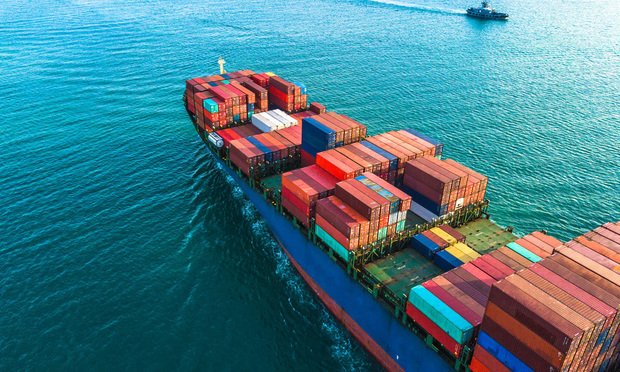 "Total losses are at historic low levels for the third year running," Captain Rahul Khanna, global head of marine risk consulting at AGCS, said in a release. "However, it is not all smooth sailing. The ongoing crew crisis, the increasing number of issues posed by larger vessels, growing concerns around supply chain delays and disruptions, as well as complying with environmental targets, bring significant risk management challenges for ship owners and their crews." (Credit: Avigator Thailand/Shutterstock.com)
"Total losses are at historic low levels for the third year running," Captain Rahul Khanna, global head of marine risk consulting at AGCS, said in a release. "However, it is not all smooth sailing. The ongoing crew crisis, the increasing number of issues posed by larger vessels, growing concerns around supply chain delays and disruptions, as well as complying with environmental targets, bring significant risk management challenges for ship owners and their crews." (Credit: Avigator Thailand/Shutterstock.com)
Despite making gripping headlines, with grounded boats and lost cargo churning through news cycles, the number of shipping incidents declined around 4% year-on-year in 2020, according to Allianz Global Corporate & Specialty (AGCS), which noted the total losses of vessels has dropped by 50% during the past decade.
Recommended For You
Want to continue reading?
Become a Free PropertyCasualty360 Digital Reader
Your access to unlimited PropertyCasualty360 content isn’t changing.
Once you are an ALM digital member, you’ll receive:
- Breaking insurance news and analysis, on-site and via our newsletters and custom alerts
- Weekly Insurance Speak podcast featuring exclusive interviews with industry leaders
- Educational webcasts, white papers, and ebooks from industry thought leaders
- Critical converage of the employee benefits and financial advisory markets on our other ALM sites, BenefitsPRO and ThinkAdvisor
Already have an account? Sign In Now
© Touchpoint Markets, All Rights Reserved. Request academic re-use from www.copyright.com. All other uses, submit a request to [email protected]. For more inforrmation visit Asset & Logo Licensing.







